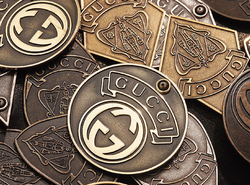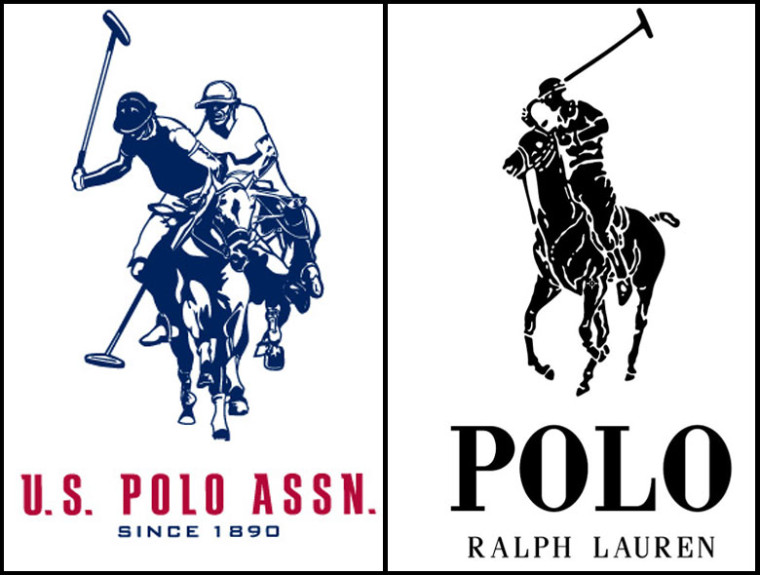
The rationale for protecting a brand is no secret. If a brand name is the foundation of your business, losing it could mean losing millions of dollars in valuation and being forced to start over. Okay, those might be some extreme results (Thermos lost its brand to genericide but is still recognized as the market leader in insulated food/beverage containers, without which the world would be a much colder place), but the result is looming out there like a hawker of goods in a flea market and no brand owner wants to be positioned for failure in a hyper-competitive marketplace.
And that brings us to the problem that many luxury brands are finding themselves in: tracking down and combating online counterfeiters.
The common thread, of course, is brand protection. In Michael Kors’ lawsuit against Costco, M.K. argued that Costco was using the MK brand to falsely convey that a consumer could buy MK products at a discount price at Costco. Even if the bags advertised were authentic, seeing a Michael Kors bag at Costco could “cheapen” the reputation of Michael Kors brand. In the early 1980s, Polo Ralph Lauren sued the U.S. Polo Association (the “everyday” preppy clothier) for trademark infringement and won. Ralph Lauren argued that use of an image of a polo player riding a horse along with the word “Polo” infringed on Ralph Lauren’s iconic silhouette of the same image.
But what happens when infringement migrates from a more tangible, stationary source like a flea market or well-known “counterfeit rows”, to more nimble and dynamic online counterfeiters?
Online counterfeiting has been around for awhile, but the operators of online stores have become more sophisticated over the years. Websites use to be extensions of more brick-and-mortar operations, offering a catalogue of inventory that the counterfeiter made available through their street side stores. Within the last 5 years, counterfeiters have grown their distribution networks and taken advantage of proxy domain name registrations to conceal their true identities. Indeed, many counterfeiters provide false contact information to registrars, making it impossible to find the registrant without resorting to detailed and expensive investigations. Also, once a brand owner is able to shut-down a website, this is rarely decisive in shutting down a particular counterfeiter, who may have access to multiple suppliers and distribution channels, allowing the counterfeiter to re-open a new store within a few days. Even if a company can successfully track down the true identity of a counterfeiter and is able to obtain some kind of judgment, a counterfeiter may have taken measures to split up and divide assets in foreign countries where a U.S. judgment cannot be easily enforced.
Counterfeiting expeditions are therefore a lot like whack-a-mole; a fun game to play in an arcade, but not so entertaining if you are a brand owner and the mole is a 5 ton ugly counterfeiting ring that will chew up and spit out your public image.
Instead, luxury brands are focusing on bigger companies that offer a platform for counterfeiters to sell and distribute their goods. These websites include auction websites (eBay), b2b or b2c websites (Alibaba), internet-domain name registries, and payment processors. The options in dealing with counterfeiters through these means are two-fold:
1. A brand owner can either sue the online intermediary directly, alleging some kind of secondary liability such as contributory infringement; or
2. A brand owner can work cooperatively with an online intermediary to create an enforcement task force
Option 2 is certainly a more amicable way to combat counterfeiting (and potentially cut off a key avenue that most counterfeiters use), but it has been hard even for the larger luxury brands to achieve. For example, the American Apparel & Footwear Association has recently made a demand on Alibaba to set up an automated system to take down listings that are suspected of being linked to counterfeit sellers. So far, Alibaba has balked, insisting that their current system of intellectual property verification and manual takedown requests are adequate.
Companies have tried pursuing option 1 in the past but have failed to make any headway. For example, In 2004 Tiffany claimed that eBay was infringing on the TIFFANY mark by allowing sellers to start auctions for fake products under the name TIFFANY and that such auctions were harming the integrity of the TIFFANY brand. eBay was able to fight off the lawsuit by claiming that Tiffany, as the trademark owner, had the ultimate responsibility for enforcing its trademark rights and that eBay could only be expected to respond to complaints raised by Tiffany. The logic of this decision is that owners of online marketplace websites have such a large swath of “digital real estate” to patrol (it is estimated that eBay, at any given time, has 100 million listings of products) that it would be impossible for them to proactively enforce a brand owner’s trademarks against a counterfeiter. Just think about the type of knowledge that eBay would have to have about the geographical dynamics of counterfeiting and some of the other red flags of counterfeiting that a specific trademark owner may be aware of. It would be a logistical nightmare, especially if eBay accidentally shut down the page of a legitimate distributor of luxury items, albeit one that is a little aloof when it comes to following all of the branding guidelines of the trademark owner. Not to mention, the legal requirement of having the authority of the trademark owner to launch an enforcement against a particular counterfeiter.
Kering’s latest suit against Alibaba appears to be a re-hash of the old line of argument that online marketplaces and auctions that are hot beds of trademark infringement should be found liable even despite their good-faith efforts to investigate claims of infringement when the owner brings them to the provider’s attention. Under this line of reasoning, a company that provides a platform that others can use to sell infringing items (where infringing uses constitute a majority of posts on the platform) should be found liable for infringement simply by virtue of this “general knowledge” that most people are using the platform to infringe others’ rights. This is called “contributory infringement” because the online marketplace is creating the opportunity (or contributing) to third parties to counterfeit by providing the means to promote and the products.
Kering apparently believes that Alibaba is such a platform, based on the actions of certain sellers (some of whom require a minimum purchase of 500 fake Gucci watches before accepting an order). With so many other counterfeiters finding the Alibaba platform appealing to sell counterfeit goods, there may be some substance to Kering’s position. However, they are facing an uphill battle as far as convincing a court that Alibaba’s main purpose is to serve counterfeiters.
There are enforcement methods that have worked including going after domain name registries to remove thousands of domain names that are selling infringing works. Chanel had some success with this strategy a few years ago when it sued 399 websites that were using the CHANEL brand in the URL and selling counterfeit goods. Other strategies include obtaining a court order against PayPal as payment processor for counterfeit websites to shut down payments. But counterfeiters are figuring out ways to dodge even these enforcement efforts by diversifying their asserts to non-U.S. banks (which makes freezing assets harder) and using multiple domain registries to register hundreds of domain names under fake names.
The problems of online counterfeiting are not isolated to luxury brands, either. Counterfeiting websites impacts everything from software to detergent. Accordingly, it pays for brand owners to be aware of outlets that counterfeiters are using to sell knock-offs.
Whether Kering’s latest rehash of the contributory trademark infringement argument will succeed remains to be seen. While there are difficulties to finding an online marketplace liable based on the theory that counterfeiters can easily use the platform to infringe on third party rights, technology is making it harder for brand owners to succeed using traditional means of enforcing their rights. As in the copyright arena, the distribution of cheaper goods at the demand of consumers who deliberately seek out knock-offs may be allowed to continue with the “buyer beware” caveat, with the responsibility of brand owners to go through the motions of takedown notices and infringement lawsuits against counterfeiters directly.
Chalk it up to the responsibilities of being a brand owner and having a popular image.



 RSS Feed
RSS Feed